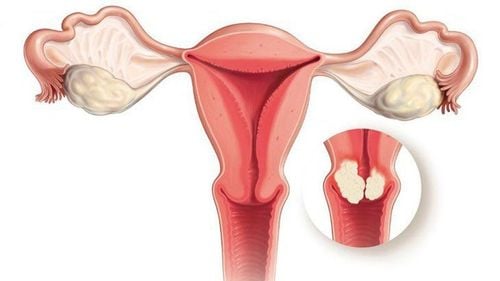This is an automatically translated article.
Co-padein is made in the form of tablets, with the main ingredients being Paracetamol and Codeine phosphate. Medications are used in the treatment of pain caused by a variety of causes.1. What does Co-padein do?
Co-padein medicine has the composition of 500mg Paracetamol and 30mg Codeine phosphate.
Paracetamol (acetaminophen) is the active metabolite of phenacetin. This is an effective pain reliever and fever reducer that can replace aspirin (different from aspirin, paracetamol is not effective in treating inflammation). Paracetamol helps to lower body temperature in febrile individuals by acting on the hypothalamus causing hypothermia, increasing thermogenesis due to vasodilation, and increasing peripheral blood flow.
Codeine is methylmorphine, which has antitussive and analgesic effects. Codeine is better absorbed in oral form, causing less biliary spasm, respiratory depression and constipation than morphine. Codeine has a mild and moderate analgesic effect. However, if used for a long time, Codeine can cause constipation. Therefore, it is recommended to combine Codeine with non-steroidal anti-inflammatory and analgesic drugs to increase the analgesic effect and relieve constipation.
The combination of Paracetamol and Codeine phosphate provides stronger pain relief than when using each active ingredient separately. At the same time, the duration of action of the drug is also longer.
Indications for the use of Co-padein: Treatment of pain in cases of unresponsiveness to peripheral analgesia alone:
Pain in the musculoskeletal system; Dysmenorrhea ; Headache, toothache; Co-padein is contraindicated in the following cases:
People with hypersensitivity to Paracetamol or Codeine components; People with liver disease, respiratory failure; Patients with G6PD deficiency; Pregnant and lactating women; Children under 15 years old or children under 18 years of age who have had tonsillectomy / curettage V.A.
2. How to use and dose of Co-padein
Co-padein is taken orally. The recommended dose of the drug is 1 tablet / time x 1-3 times / day. Co-padein doses should be spaced at least 4 hours apart. In the case of patients with severe renal impairment, the doses should be spaced at least 8 hours apart. Patients should note that they should not take more than 8 pills per day and do not arbitrarily use pain relievers for more than 10 days (unless approved by a doctor).
Overdose:
Overdose of Paracetamol: If taking a single toxic dose or taking repeated large doses of Paracetamol (7.5 - 10mg/day, for 1-2 days), long-term use of the drug may lead to Paracetamol poisoning. The most serious acute toxic effect of paracetamol overdose is dose-dependent hepatic necrosis, which can be fatal. Paracetamol detoxification is the use of sulfhydryl compounds. Oral or intravenous N-acetylcysteine. The drug should be given immediately if less than 36 hours have passed since taking Paracetamol; Codeine phosphate overdose: Long-term use of Codeine at a dose of 240 - 500mg/day can cause drug addiction with manifestations of restlessness, tremors, sweating, muscle twitching, runny nose, ... when the drug is lacking. . May be psychologically and physically dependent on drugs, causing drug addiction. Other side effects of Codeine are respiratory depression, lethargy leading to lethargy, muscle weakness, coma, cold and moist skin, sometimes slow pulse, low blood pressure, even pulse collapse, respiratory arrest, cardiac arrest, may die. The treatment is to restore respiration by providing oxygen, supporting controlled breathing. Naloxone should be administered intravenously immediately in the event of a severe overdose. \ If a dose of Co-padein is forgotten, the patient should take it as soon as possible. If it is almost time for the next dose, the patient should skip the missed dose and take the next dose on schedule.
3. Co-padein side effects
Some side effects patients may experience when using Co-padein include:
Side effects related to Paracetamol: Skin rash (erythema or urticaria), neutropenia, confusion gastrointestinal, nephrotoxicity, thrombocytopenia (rare); Side effects related to Codein: Constipation, nausea, drowsiness, dizziness, skin allergies, respiratory depression, bronchospasm,... Patients experience side effects of Co-padein. You should immediately notify your doctor for proper advice and treatment.
4. Be careful when using Co-padein
Some notes patients need to remember before and while using Co-padein:
Be careful when using Co-padein if the patient has respiratory diseases such as asthma, emphysema; Long-term use of Co-padein can lead to the risk of addiction; Do not drink alcohol while using Co-padein; The drug Co-padein can give a positive result when testing for stimulants in sports; Co-padein causes drowsiness, so caution should be exercised when driving or operating machinery; Co-padein should only be used at the lowest effective dose for the shortest possible time; Co-padein is not recommended for children with respiratory problems such as shortness of breath, wheezing while sleeping,...; Physicians should warn patients using Co-padein about signs of serious skin reactions such as: Lyell syndrome, Stevens-Johnson syndrome, acute generalized exanthematous pustulosis; Co-padein should not be used by pregnant or lactating women.
5. Co-padein drug interactions
Co-padein drug interactions involve 2 main components of the drug. Some drug interactions of Co-padein include:
Patients taking Phenothiazines and hypothermia concomitantly with Co-padein can lead to severe hypothermia; Concomitant use of Paracetamol with anticonvulsants (barbiturates, carbamazepines, phenytoin, heavy alcohol intake or isoniazid may increase hepatotoxicity; Long-term administration of paracetamol in high doses may slightly increase the anticoagulant effect of coumarins). This effect is small, not clinically important, so Paracetamol is still used when necessary to reduce fever or relieve mild pain in patients who are using coumarin and indandion derivatives; The analgesic effect of Codeine increased when combined with Paracetamol but decreased or lost effect by quinidine; Codeine will reduce the metabolism of Cyclosporin by inhibiting the enzyme Cytochrome P450. When using Co-padein, the patient should inform the doctor about the medical history.
Please dial HOTLINE for more information or register for an appointment HERE. Download MyVinmec app to make appointments faster and to manage your bookings easily.













